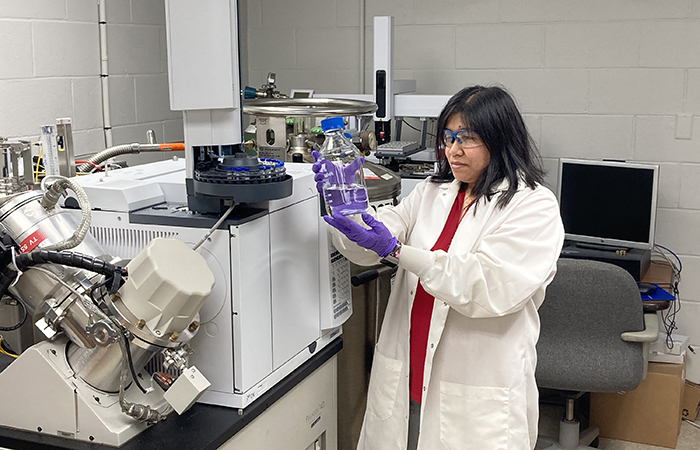Clearing the Way for Alternative Jet Fuels
Alternative fuels are more important than ever
by Steven Zabarnick, Ph.D., division head, fuels and combustion
With increasing industry demand for a greater variety of sustainable alternative aviation fuels, the importance of a systematic pathway for the accurate testing, validation and approval of alt jet fuels has never been more important.
A significant step forward in establishing this process was the creation of the Federal Aviation Administration-sponsored “D4054 Clearinghouse” for the testing and validation of all new aviation fuels, one of the many steps along the way from inception to approval. Named after the ASTM International standard for the qualification and approval of alternative jet fuels and additives and supported by the FAA’s Center of Excellence for Alternative Jet Fuels and Environment, a multi-university research program, the Clearinghouse is coordinated by the University of Dayton Research Institute.
Through the Clearinghouse, we work closely with fuel producers to guide them through the approval process, which involves testing and analysis of fuel samples for composition, material properties and performance, as well as for compatibility with engine components. We perform much of the composition, compatibility and property testing in-house and subcontract some testing to organizations such as Southwest Research Institute of San Antonio, Texas. We also coordinate additional evaluations, such as full-scale engine testing, at external facilities.
The Clearinghouse also funds engine and airframe original equipment manufacturers, such as Boeing, GE Aviation and Honeywell, to review synthetic fuel research reports for evaluation of the suitability of the fuels in their equipment.
Last year’s development of a “Fast Track” path within the Clearinghouse has already proven a major advancement in the approval path. Developed in a collaborative effort by UDRI, ASTM and the FAA, the Fast Track significantly expedites the approval of candidate synthetic fuels whose composition and properties are very similar to currently approved fuels.
The most recent alternative jet fuel specification approved by ASTM—allowing for hydrocarbons and oils from one particular algae strain to be blended, up to 10% in volume, with petroleum jet fuel—was also the first to be approved under the Fast Track path.
The specification approval effort was led by IHI Corp. of Tokyo, who developed a feedstock blend using a strain of algae that produces a high proportion of hydrocarbons that are upgraded, along with the usual algae fatty acids, to a hydrocarbon jet fuel blend component.
This new annex to ASTM’s D7566 standard for synthetic aviation fuel brings the total of synthetic fuel feedstocks approved for blending with petroleum jet fuel to seven, with six of them from renewable feedstocks such as plant and seed oils. The maximum blend ratio in these seven annexes is currently 50%, but we expect to see that number increase in the future. For now, synthetic fuel producers do not currently produce enough blendstock to risk exceeding the limit.
In addition to providing a guided evaluation path for new alternative fuels, the Clearinghouse allows us to also support the approval of alternative aviation fuel manufacturing methods, as in the case of a new co-processing specification also published by ASTM last year. The specification allows Fischer-Tropsch (FT) products, such as waxes, to be co-processed in petroleum refineries in the manufacture of jet fuel containing a maximum of 5% synthetic material. The specification allows the use of any feedstock that can be gasified to syngas (CO and H2) for conversion to liquid hydrocarbons via FT synthesis.
The approval effort was led by Fulcrum BioEnergy of Pleasanton, California. Fulcrum intends to gasify municipal solid waste to produce a “synthetic crude” to be co-processed in petroleum refineries.
The new algae-blend and FT co-processing specifications represent significant contributions to alternative aviation fuels. Both processes yield hydrocarbons that can be blended with conventional fuel and used as “drop-in” replacements for conventional petroleum fuel, and which meet all required safety and performance specifications.
Cleaner burning and sustainable alternative fuels reduce aircraft engine and greenhouse gas emissions, and the availability of a variety of these fuels increases international energy security. Working in partnership with the aviation industry, academic research organizations, fuel producers and the FAA through the D4054 Clearinghouse, we will continue to contribute to the development of these important new fuels, feedstocks and processes.
September 13, 2021 (Originally published Sept. 17, 2020, in Aerospace Testing International magazine)

